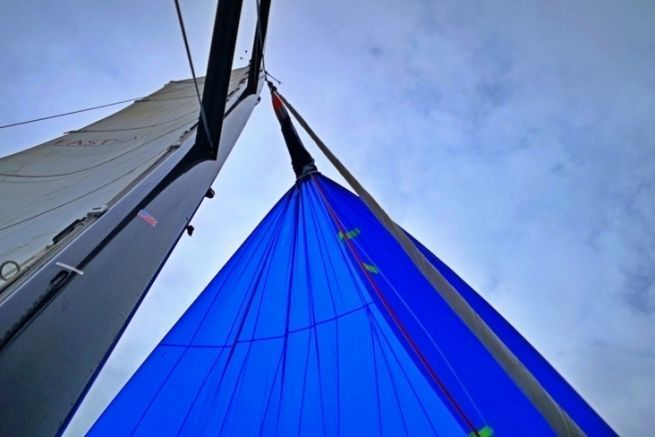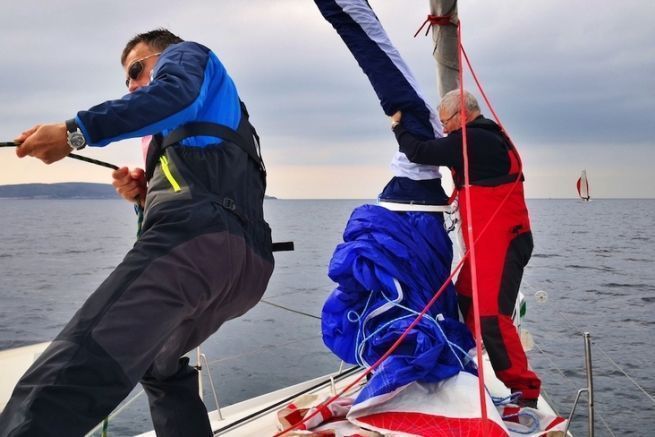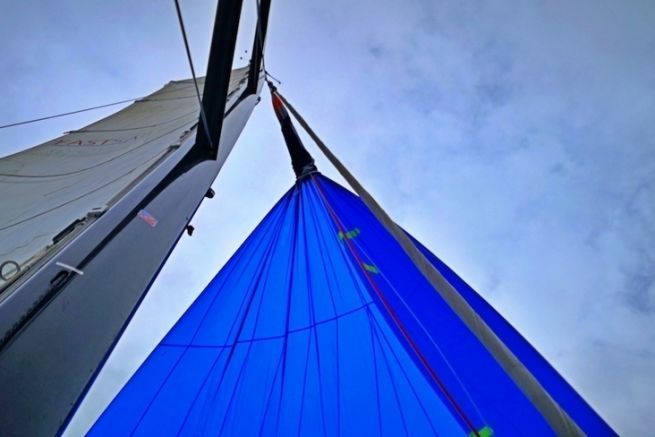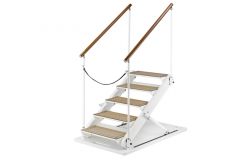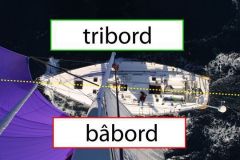In addition to the two previous articles, " just use the spinnaker sock "and" choosing the right spinnaker sock "Here are some tips and tricks gleaned from offshore racers and boaters.
When the sock becomes a navigational aid
- The sock facilitates maneuvering with a reduced crew . Keep in mind that when she chokes the spinnaker, the downhaul can be attached to the bow (on a cleat for example). It will hold the choked spinnaker for several minutes without anyone at the bow. It can be considered to keep it in this way for a few moments, provided conditions are relatively calm.
- The sock makes it possible to easy to regulate the speed of your boat in case of downwind sailing. Let's imagine a collision course for example, instead of changing course, you can lower the sock for a few minutes to let the privileged boat pass. If you have an AIS that warns of collision hazards, you will be able to follow the crossing accurately.
- The sock limits the risk of missing its gybe (spinnaker around the forestay or departure from the luff on exit) and to sail with a reduced crew without stress. Simply lower it to suffocate the spinnaker, jibe the mainsail, pass the sock over the other tack and send it back to free the canvas. Of course, manoeuvres at the bow have to be carried out while attached to the lifelines.
To better manoeuvre the sock
- The to-and-fro end is bowmaneuver . On the one hand, you shoot at a good angle and on the other hand, the loose side of the toggle will not get caught in a spreader or a possible radar.
- As we've already seen, it's on your knees that you maneuver in order to improve his balance, which is necessarily precarious when you have your head up in the air.
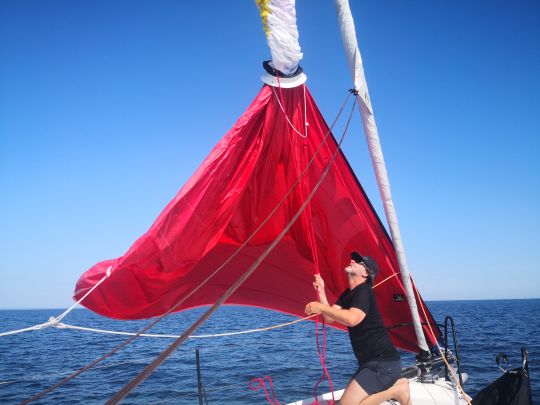
- When lowering or raising the sock, it is essential to prevent a hull from forming in the back and forth. It would jam in the pulley at the top of the sock. In addition, by pulling on the tip to bring the hull down to within reach, the knot would be strangled, which would then have to be untied with the spinnaker slamming.
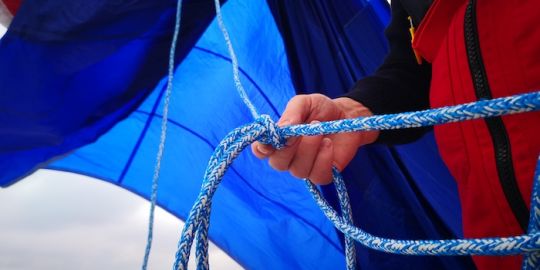
- When you hoist the spinnaker in its sock, it may slip out of your hand if you do not wrap your arm around it. It may swing like a pendulum in the wind. If it is difficult to retrieve it, the helmsman will fake a breakdown so that a crew member can grab it and it will naturally return to the foredeck.
- The coloured strip along the length of the sock makes it possible to visualize from possible twists . If necessary, take hold of the swallower and the tiller and rotate them around the spinnaker until the turns are eliminated.
- When the first few metres of the sock are rolled up, it often happens that the spinnaker cloth "wadded" before the swallower ...preventing the maneuver. The crew member must grab the canvas by hand and pull it out of the sleeve. Then the operation can be resumed to raise the drain to the top.
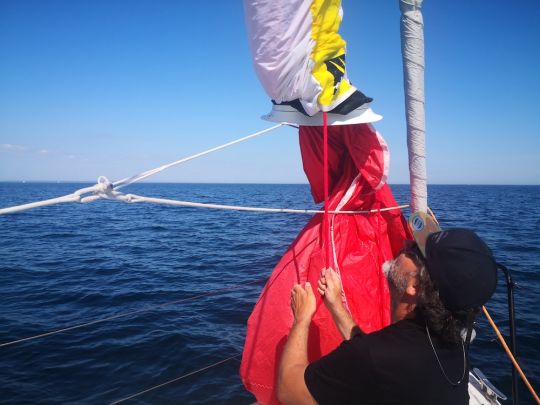
- Once the sock is rolled up, check that it is at its highest point and that the swallow does not force on the canvas when it's swollen.
- To complete the manoeuvre, you must attach the toggle end away from the forestay . It can be hit at the foot of the mast or on the lines, the aim being to keep it as far away as possible from the risk of entanglement with the spinnaker.
- The tip must be tension-free attachment to let the spinnaker head and the rolled up sock move forward, backward and change tack as required.

 /
/ 